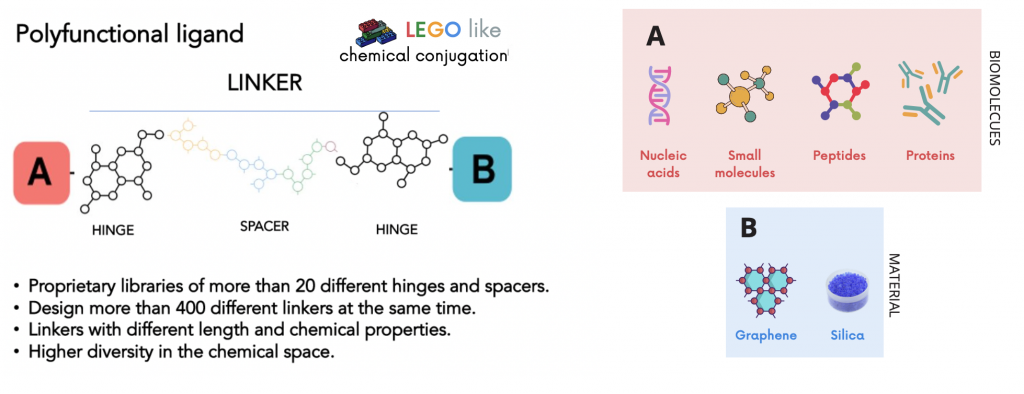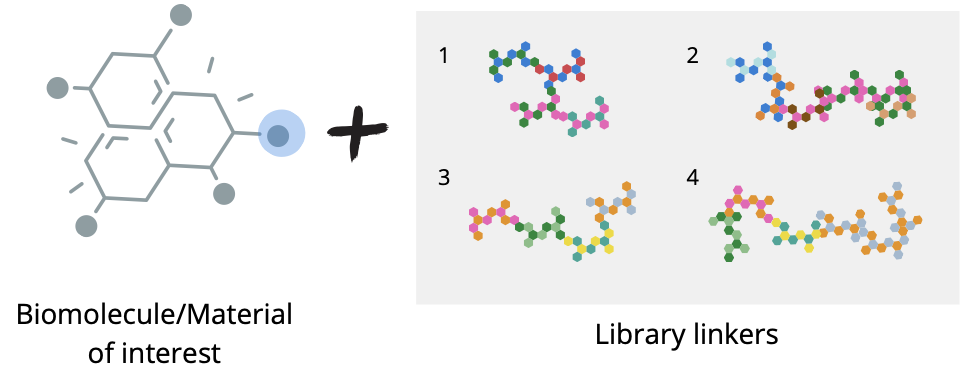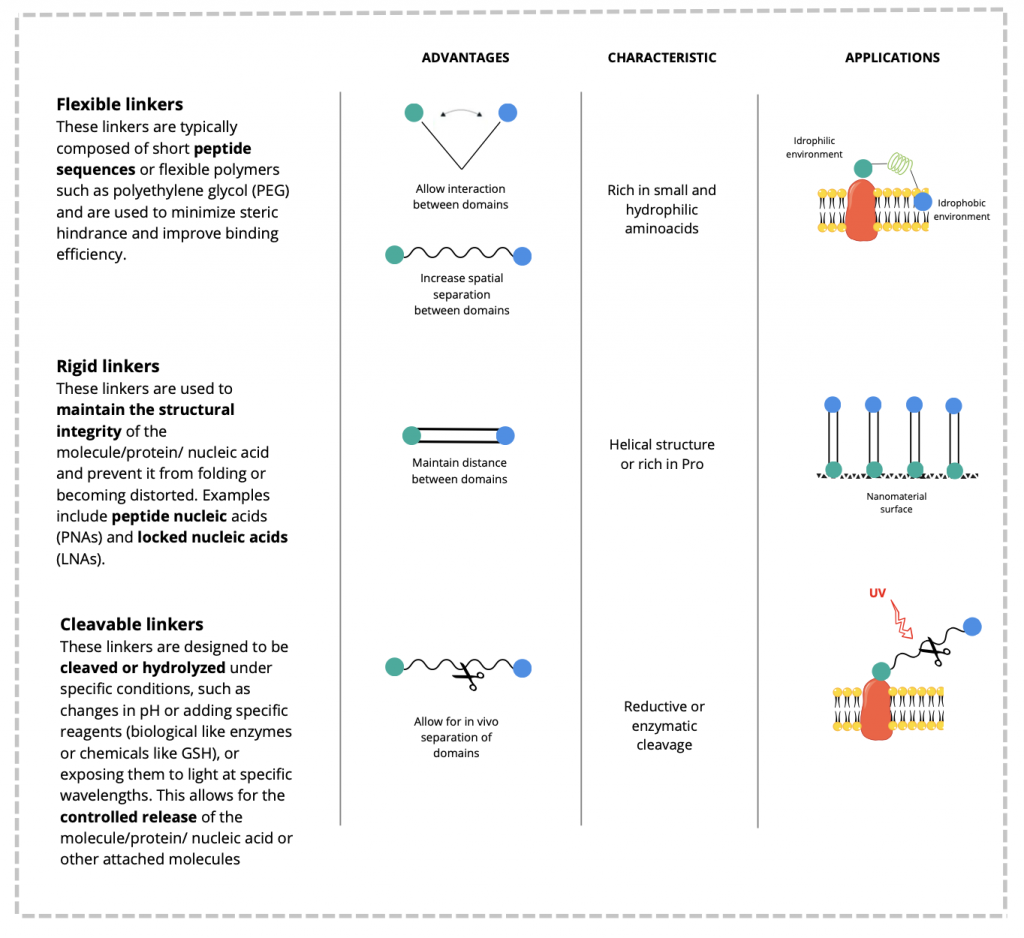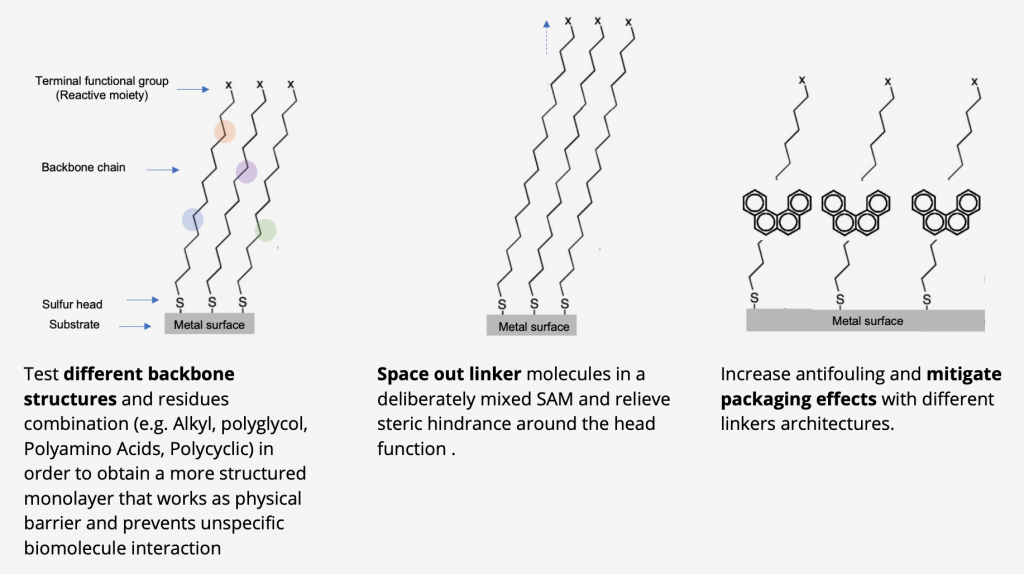Transform your biosensor into an innovative technology

New article showcasing Celtarys fluorescent ligand for Dopamine D3 Receptor in Fluorescence based HTS
27 March 2023
CELTARY & NANOTEMPER-Discovery partnership to enhance performance in GPCR characterization
13 July 2023
The fabrication of a particular device depends heavily on the immobilization of the biosensing element (a probe such as an antibody, aptamer, etc.) onto the transducer material in a controlled manner in order to produce a reproducible and stable configuration where the biological activity of the biosensing element is preserved.
Biosensors of whatever transduction type are well-recognized to suffer severely from interference with respect to both response selectivity and quantitative signaling when placed in biological fluids such as blood, plasma, serum, urine, or cerebrospinal fluid. This is caused, in part, by the non-specific adsorption (NSA) or fouling of the device substrate surface by proteinaceous species and cells present in such fluids. This process can seriously hinder the performance of a biosensor by the instigation of a large background signal.
Including linker chemistry into biosensor design can represent a powerful solution to improve sensitivity and selectivity performance.
Thanks to our Lego chemical combinatorial approach we can functionalize different types of materials and biomolecules, offering an infinite number of tunable options. Our linker can be adapted to many different surfaces (silica, graphene) and different biological structures (nucleic acids, small molecules, peptides, proteins).

HUNDREDS OF LINKERS ARCHITECTURES WITH CELTARYS ADVANCED LINKEROLOGY

Thanks to our LEGO-like chemical conjugation technology, we can generate at the same time, hundreds of different architectures that can be tested and optimized for the specific needs of your biosensor.Test up to 400 different linkers combinations at the same time !!!
Celtarys provides a wide assortment of linker molecules from stock. They can be used for the rapid design and optimization of biosensor structures.

KEY ADVANTAGES OF IMPLEMENTING CELTARYS LINKERS IN BIOSENSORS ARCHITECTURES

- Reduce background-to-noise ratio, increasing the gain of the biosensor.
- Attenuates fold induction.
- Changing molecules density by adding specific residual groups to the linkers.
- Functionalize molecules in multiple binding sites of interest.
- Increasing probe retention time.
- Guarantee Biocompatibility of the sensor in the aqueous physiological environment.
- Modulate matrix functionalization yield (capping).





